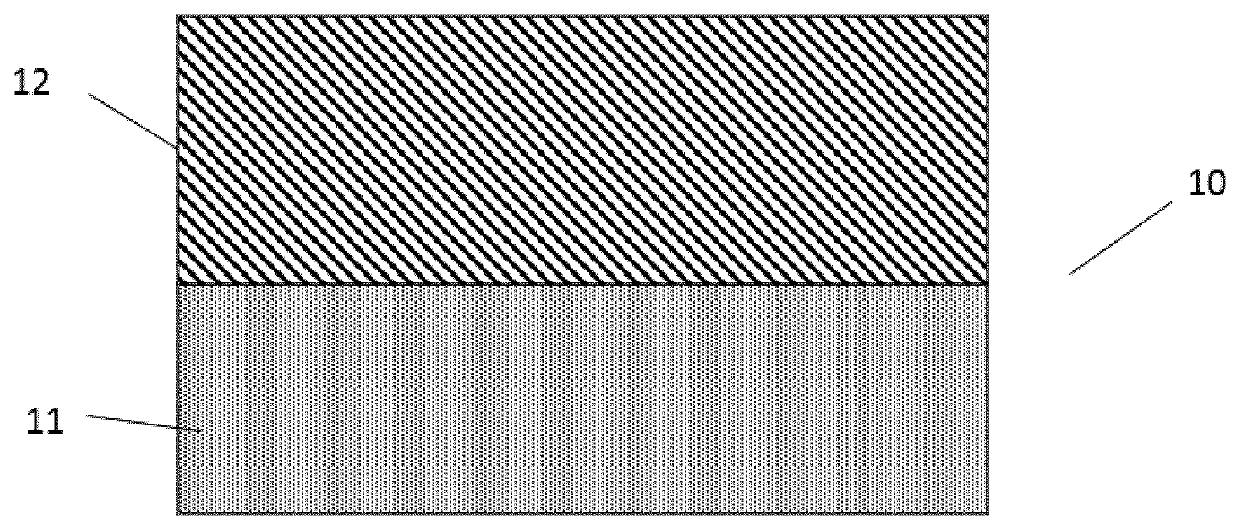PVD process for the deposition of Al2O3 and a coated cutting tool with at least one layer of Al2O3
a technology of coating cutting tools and cutting tools, which is applied in the manufacturing of tools, superimposed coating processes, turning machine accessories, etc., can solve the problems of crack formation during cooling, deterioration of cutting tools, and non-optimization of cutting tools as tool coating materials, so as to improve the distribution of coating thickness, improve the effect of reducing young's modulus and hardness
- Summary
- Abstract
- Description
- Claims
- Application Information
AI Technical Summary
Benefits of technology
Problems solved by technology
Method used
Image
Examples
example 2
n of the Layer Thicknesses
[0092]The following table 2 shows the ratios of the measured layer thicknesses on the rake face (RF) and on the flank face (FF) [ratio RF / FF] of samples produced as described for sample #1 (invention) and sample #5 (comparative example) in example 1, respectively. The ratios RF / FF were measured on samples positioned at the top position, the middle position and the bottom position within the PVD reactor. Thereby, the layer thicknesses on the rake face (RF) were measured on the upper rake face for the samples at the top and middle positions in the reactor, whereas the layer thickness on the rake face (RF) of the sample at the bottom position of the reactor was measured on the lower rake face.
[0093]
TABLE 2SampleReactorlayer thicknesslayer thicknessratioaccording topositionRF [μm]FF [μm]RF / FF#1 (Inv.)top0.380.690.55middle0.620.820.77bottom0.370.620.60#5 (Comp.)top0.280.620.45middle0.570.830.69bottom0.270.640.43
[0094]The obtained results show that the thickness ...
example 3
ests on Multi-Layer Coated Cutting Tools
[0095]In order to assess the effect of the Al2O3 layer according to the invention, compared to conventional coating, with respect to cutting properties, multi-layer coated cutting tools were produced and tested in a milling test. The cemented carbide substrates were the same as used above in example 1. In each case the multi-layer coating structures consisted of a total of seven layers, four of them were conventional TiAlN layers, alternating with inventive gamma-Al2O3 layers in the tool according to the invention, or with conventional Al2O3 layers in the comparative tool. The thicknesses of the layers corresponding to each other were the same in both sequences.
[0096]The TiAlN layers were each deposited in an Arc-PVD process at a total pressure of 10 Pa. The ratio Al / (Al+Ti) in the layers was 0.61 with 50 at. % nitrogen. The deposition conditions were adjusted to achieve the desired layer thicknesses.
[0097]In the layer sequence of the inventiv...
PUM
| Property | Measurement | Unit |
|---|---|---|
| Vickers hardness HV | aaaaa | aaaaa |
| bias voltage | aaaaa | aaaaa |
| pulse frequency | aaaaa | aaaaa |
Abstract
Description
Claims
Application Information
 Login to View More
Login to View More - R&D
- Intellectual Property
- Life Sciences
- Materials
- Tech Scout
- Unparalleled Data Quality
- Higher Quality Content
- 60% Fewer Hallucinations
Browse by: Latest US Patents, China's latest patents, Technical Efficacy Thesaurus, Application Domain, Technology Topic, Popular Technical Reports.
© 2025 PatSnap. All rights reserved.Legal|Privacy policy|Modern Slavery Act Transparency Statement|Sitemap|About US| Contact US: help@patsnap.com

